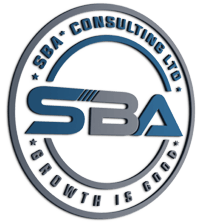Improving your Cash Flow isn’t difficult, it just requires a re-think
It is a seven step process.
1. Cash Flow Forecast
2. Improve Invoicing
3. Make your payment terms known
4. Change your payment policies
5. Use EDI & E-Commerce
6. Open yourselves to FX
7. Look into interest free credit
Cash Flow Forecasts
Updating your cash flow forecasts on a regular basis (which depending on your business can be daily, weekly or even monthly [not recommended]) will improve your cash flow. Understanding where your cash is and isn’t as well as where it needs to go is crucial. Cash siting in A/R doesn’t do your business any good. Having payables that need to be paid soonest doesn’t help your cash flow but either getting credit or finding interest free credit may be the trick.
Improve Invoicing
The faster you invoice the sooner you receive your money. It is as simple as that. Examine you invoicing policies and find out ways to improve on the speed of the process. The more you can automate this process, such as sending invoices via EDI or email, the faster your customer can receive and process your invoice the faster that payment will come.
Make your payment terms known
I’ve seen many an invoice that you have to hunt for the payment terms. Make them clear. Make sure you send reminders (your accounting system should be able to provide this service). The noisier the vendor the faster the payment.
Change your payment policies
Stop accepting checks as your primary mode of payment. Implement ACH, Wire and Credit Cards. While ACH/Wire have bank fees, the idea is the faster you get paid, the better position you are in. Even today, it still takes a few days to clear the check, and you have to wait for the post office to deliver (and not lose or delay) that check.
Credit Cards come with a discount rate (it is another form of factoring your receivables), but you can set up pre-payment only by Credit Card and you’ll get your cash in two or three days. I can’t stress enough that Credit Cards should only be used in a pre-payment scenario. Otherwise your customer will pay in 30 days and use their Credit Card. They effectively have moved their payment term to a maximum of 60 days to your detriment.
The last option is terms with a cash discount incentive, say 3% if paid by ACH/Wire with in 7 days. The only issue is that companies will take the 3% whenever they choose to pay.
Use EDI & E-Commerce
Using EDI as mentioned before will speed up the invoicing process, receipt of orders and double-entry of orders. E-Commerce eliminates double-entry of orders and is usually tied to Credit Card payment. If you are in Retail, then using contactless payment processing speeds up check-out payment aspect allowing customers to have more time to shop (hopefully in your store).
Open yourselves to FX
If you are on-line or even if you don’t have a E-commerce presence, make your self open to selling globally. Pricing can be in USD or local currency, but modern day accounting systems make FX accounting a breeze. If you bill in local currency, be sure you’ve hedged against losses or have dynamic pricing tied to changing fx rates.
Look into interest free credit
More and more suppliers, just like will accept Credit Cards. That gives you, as the user of the Credit Card an average of 45 days grace period. If you buy sometng on the first of February, you probably won’t have to pay the credit card bill to March 31 or about 60 days. If you buy it on the 15th of February, you have 45 days, and if on February 28th, then about 30. Hence 45 days grace or free credit.
SBA * Consulting can help you with all these points including a assisting in the creation of a dynamic cash flow model.
